Matsue Horanenya - Togyosai ōnīõŹš
| Travel Reports by Aaron Chong | view profile of Aaron Chong |
| previous post |
| next post |
| Note: The opinions and views expressed in this user report are those of the individual author and do not necessarily reflect the opinions and views of japan-guide.com. |
May 18, 2019 - Matsue Horanenya - Togyosai ōnīõŹš
The time has come to see the first day of the Matsue Horanenya festival!
Although the festival was scheduled to begin at 11 in the morning, I woke up at 7, knowing that I need to be at the riverbank at least 2 hours before the festival starts in order to get a good seat, based on past festival experience. While preparing breakfast, I met a lady from Germany had just arrived all the way from Hokkaido at the guesthouse in the morning, wanting to see the Horanenya festival that was featured in her guidebook. However, she couldn't find any information about the festival at the station and had no idea when and where it will be held. I assured her that I've read the festival website and knew all the details. We both left the guesthouse immediately after breakfast and headed for the Matsue riverbank. As expected, there was already a crowd forming, mostly elderly folk armed with huge DSLR cameras and foldable chairs. Information booths were available supplying tourists with brochures about the festival and tourist spots around Matsue. We found a good spot to see the festival at the parking lot of the oden place where I had dinner last night. I bought a bottle of water for myself and my new German friend, laid down the plastic sheet for us to sit and armed myself with my trusty festival camera.
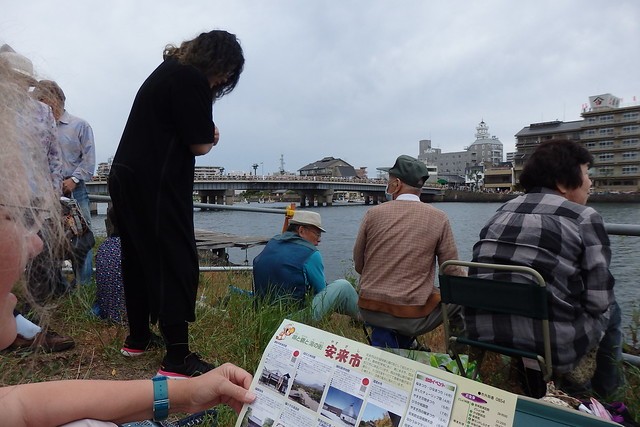
While waiting, I explained to my new friend about the festival. There was supposed to be a relic, or Mikoshi, that will be brought from the castle to a shrine called the Adakaya Shrine, located in the suburbs by boat. While the relic is being transported down the river, there will be some lavishly decorated boats called Kaidenma with people dressed in kabuki costumes circling around the relic. The Kaidenma will be circling at three different sections in between the bridges of the river. We were seated at the middle section of the river and we get to see the boats circling around three times.
I also had a chance to chat with a local who shared with me a grisly tale of the old bridge right in front of us. Two hundred years ago, the bridge that we were seeing that time was not that high and right above the water level. The bridge kept getting washed away by the river in bad weather and the locals saw this as a sign of God's wrath. To appease the God, they dug a hole in the middle of the river (I had no idea how they do this) and sacrificed a young maiden by dropping her into the hole. There was no intention to raise the height of the bridge at that time as this would allow enemy troops to cross the river easily and attack Matsue Castle.
As time passed, we could already see the festivities taking shape. The parade boats, Kaidenma, were spotted heading to the starting point of the festival.At around 10.30, an announcement was made, announcing the arrival of the relic at the riverbank and the commencement of the Kaidenma performance.
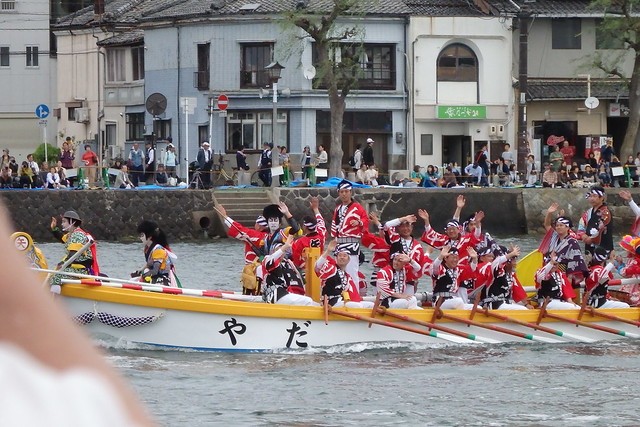
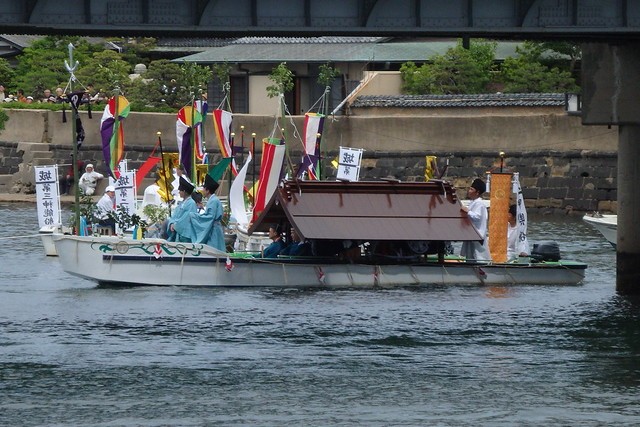

We could already hear the beating of the drums and some singing coming from the other side of the old-looking bridge in front of us. I could see the Kaidenma circling around the river. The boats have these tall masts with golden spheres on top, and we were wondering how on earth these boats will be able to pass under the bridge.
Eventually, we found out how they would pull this off. We spotted the Mikoshi passing through the old-looking bridge to our section of the river. Soon, the Kaidenma began to pass through the bridge one at a time by lowering their masts and raising them again once they have reached the other side of the bridge.
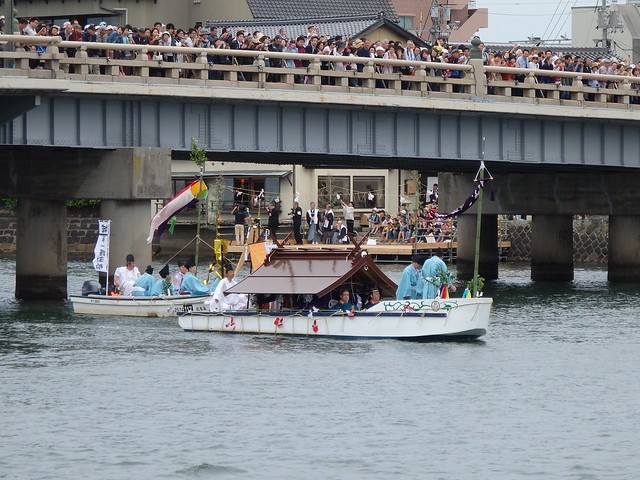
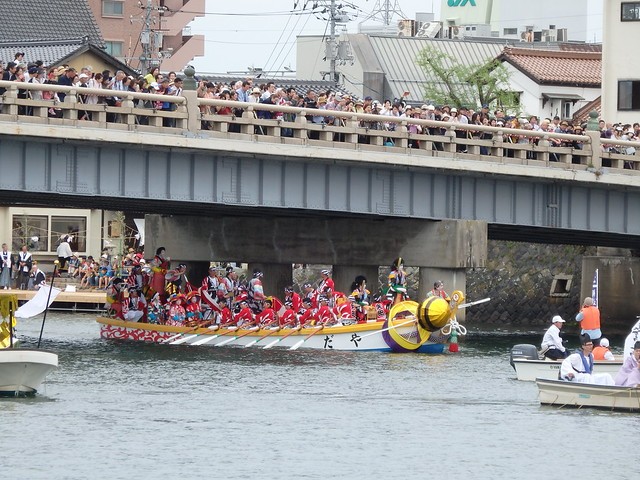
And now the show begins!
Despite the drab, cloudy weather, the festival atmosphere was exciting and electrifying. There were five Kaidenma belonging to five different districts: Oumizaki, Fukutomi, Oi, Yada and Makata. Each Kaidenma have kabuki warriors, female dancers and rowers dressed in different costumes and have different chants and songs.
Unlike other festivals I've been too, there were no flutes and traditional music, only the beating of the drums and the rowers belting their hearts out with chants of Horanenya. This was one of the best festival chants I've ever heard, right up there with the Rassera chant and tune of the Aomori Nebuta Festival. The kabuki costumes were fantastic and the choreography of the warrior and female shaman dancer were impeccable.
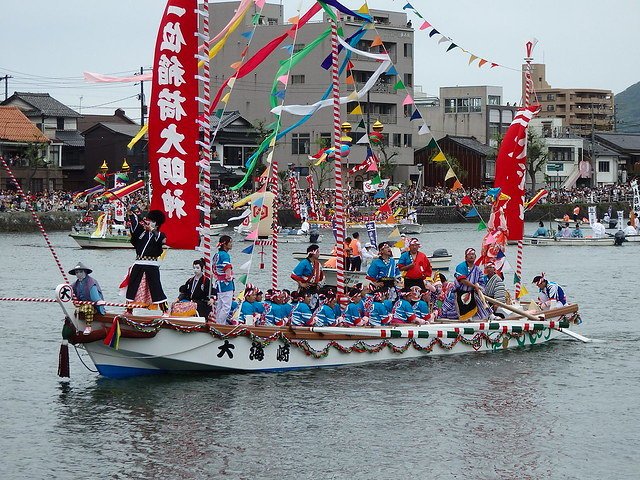
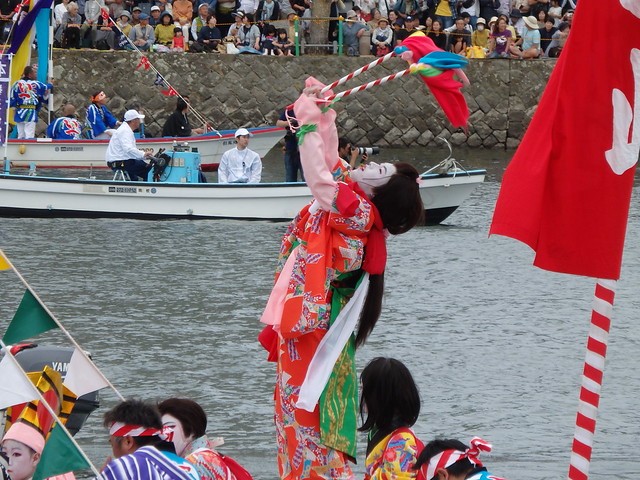

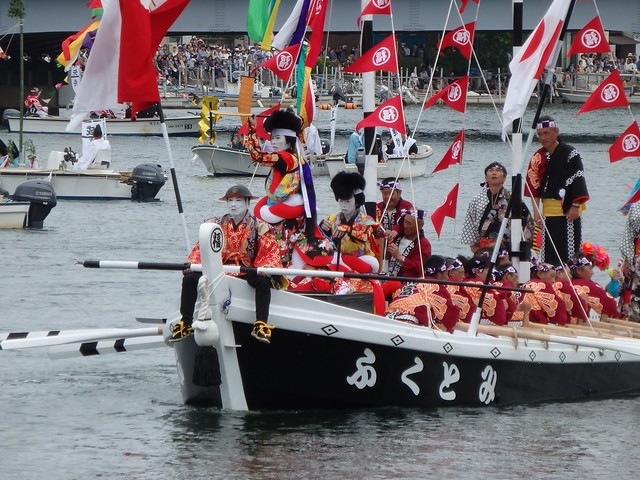
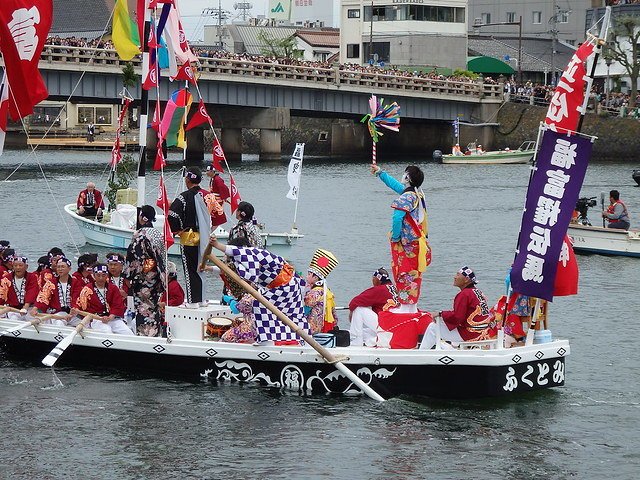
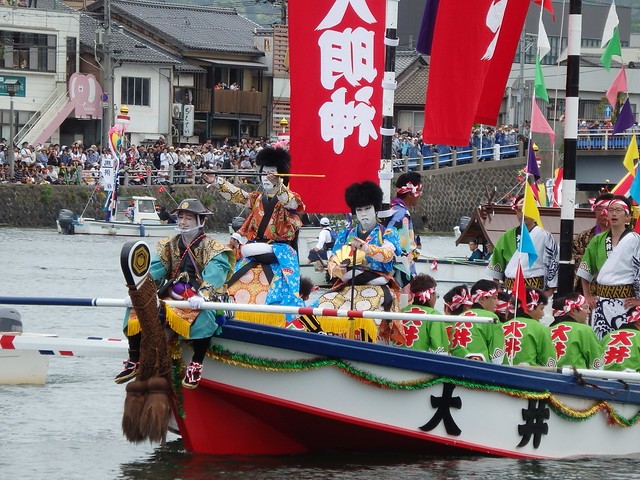
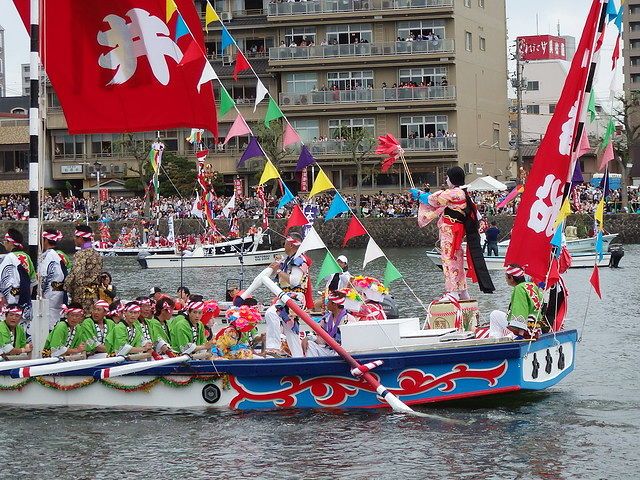
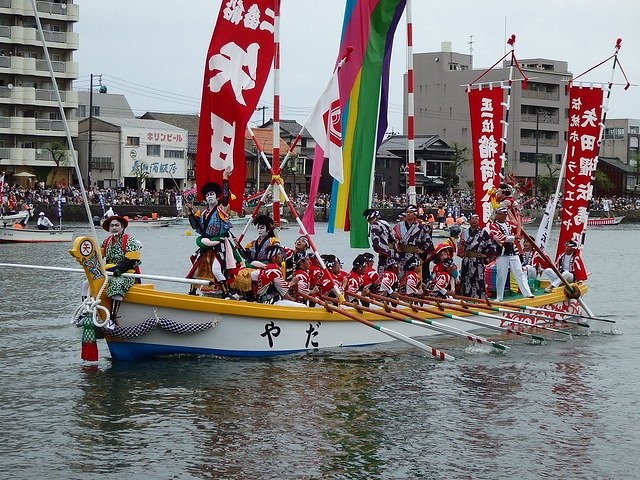
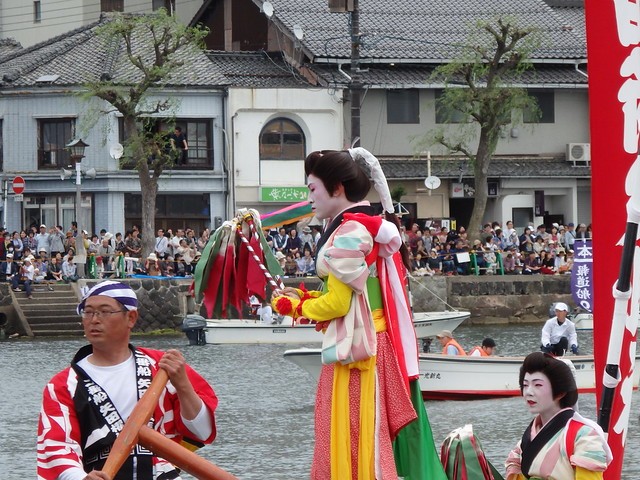
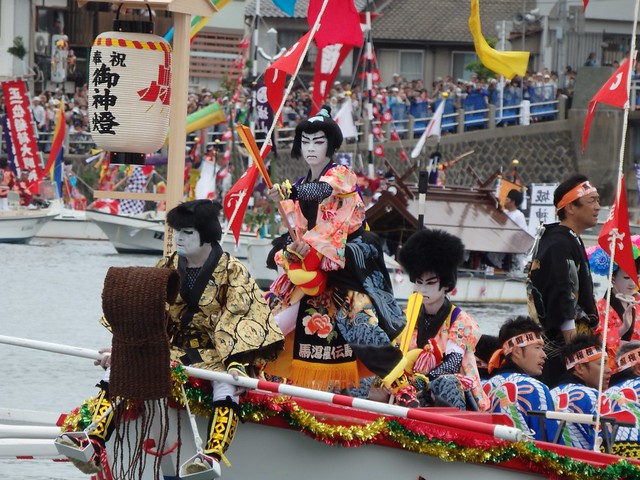
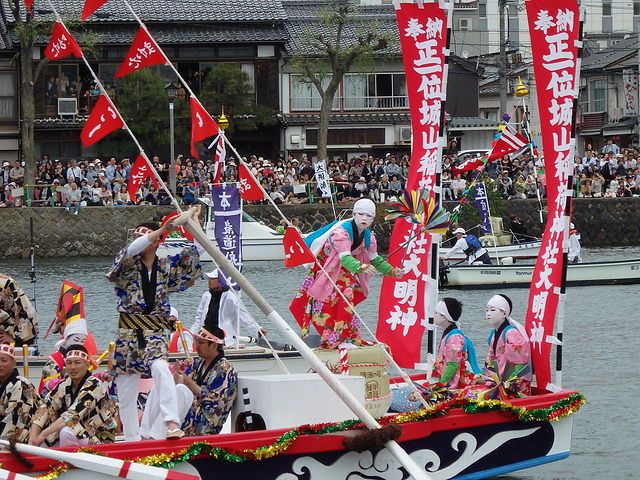

All in all, this was a festival really worth watching, considering that this was only held every 10 years. Not only was the pageantry impressive, the river area of the city was so spacious and wide that it was relatively easy to get a good viewing spot, unlike other festivals with parades on city streets (in particular the Yamakasa Gion in Fukuoka). Moreover, we could see the Kaidenma performance again at the next section of the river if we want to. The timing of the festival was really great, allowing for some sightseeing or an afternoon nap after the festival.
I have taken lots of pictures and videos and stored them in my Flickr album at https://www.flickr.com/photos/124829205@N08/albums/72157708934284707
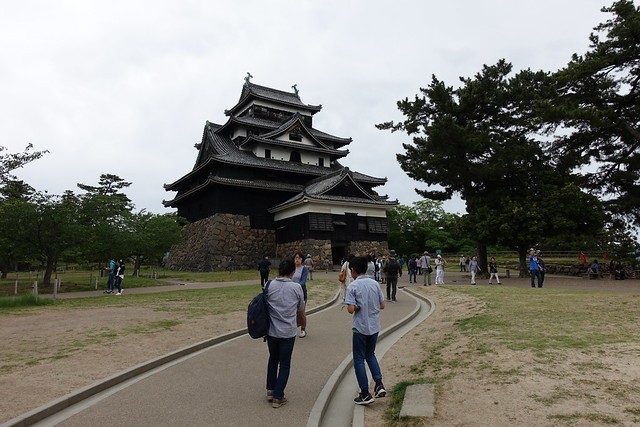
My German friend decided to rest for the rest of the afternoon while I headed out to visit some of the main attractions of Matsue.
My main goal was to visit Matsue Castle, recently declared a national treasure in 2015. I have visited the other national treasure castles - Matsumoto, Inuyama, Hikone and Himeji - before and therefore Matsue Castle was in my bucket list.
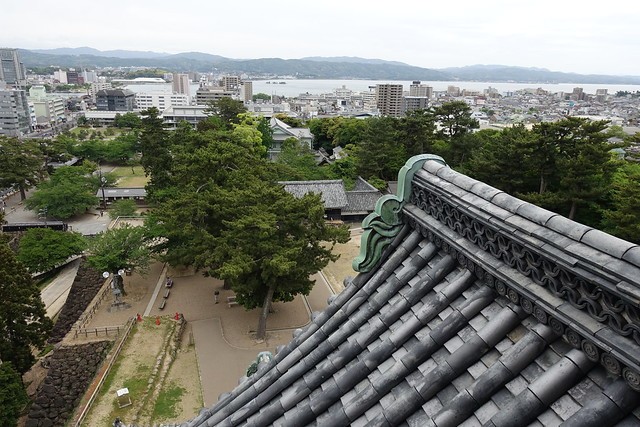
After the castle, I paid a visit to Jozan Inari Shrine, the shrine were the Mikoshi was transported out to the Adakaya Shrine and the starting point of the Horanenya festivities.
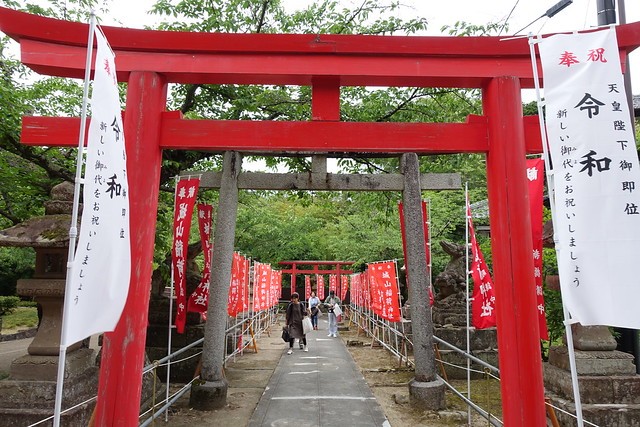
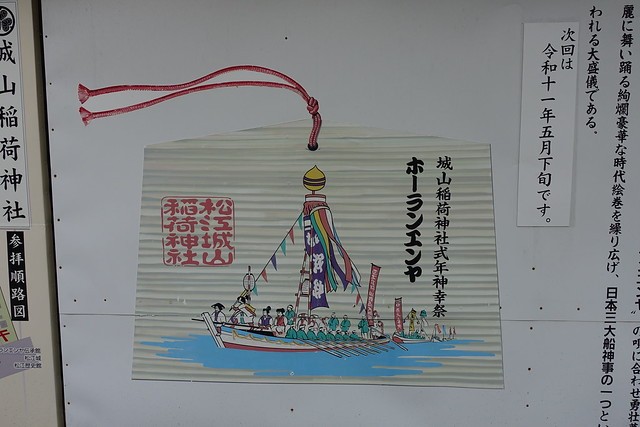
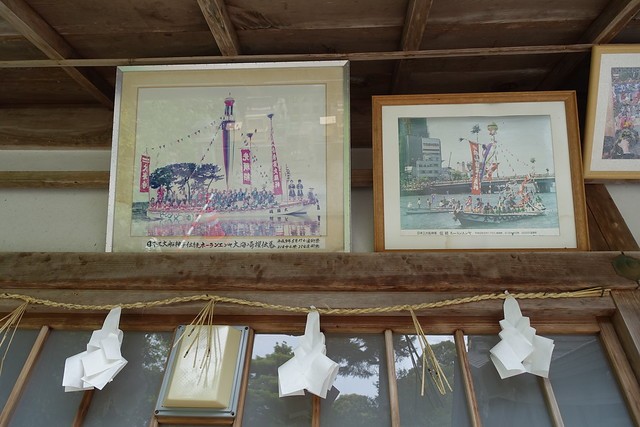
I continued on with my stroll and ended up in the samurai district called Shiomi-Nawate. I took a break with a seasonal Japanese wagashi and some cider. Matsue is one of the three great wagashi producers of Japan, after Kyoto and Kanazawa.
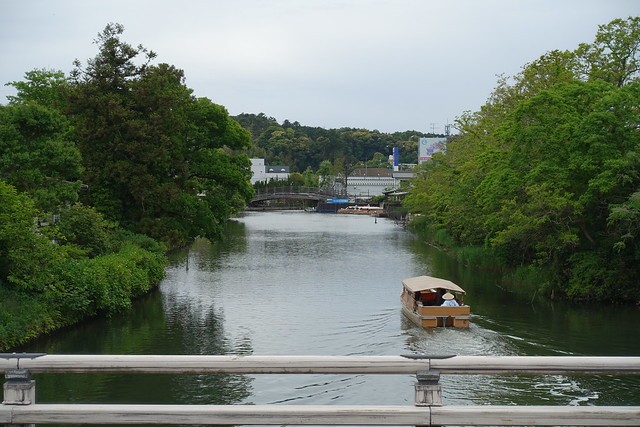
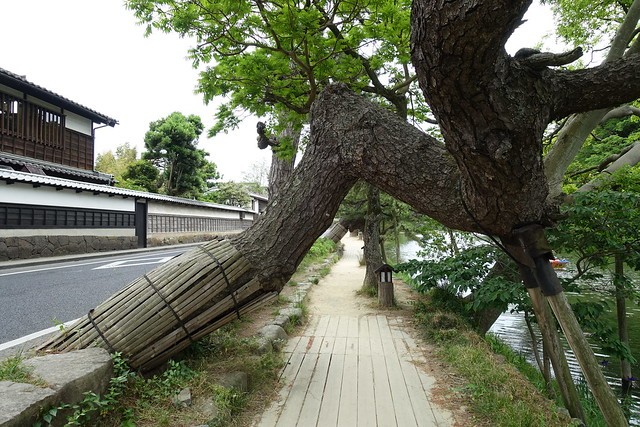
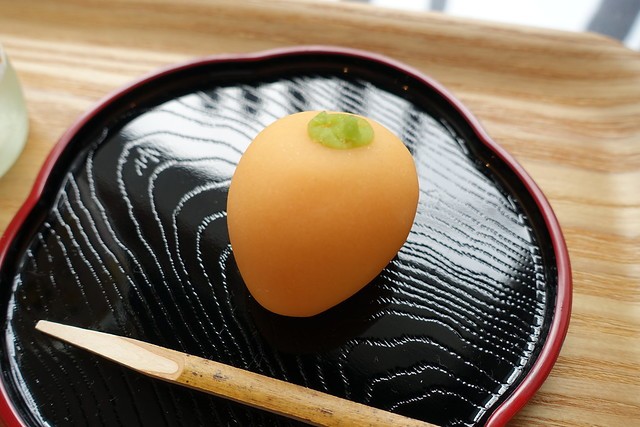
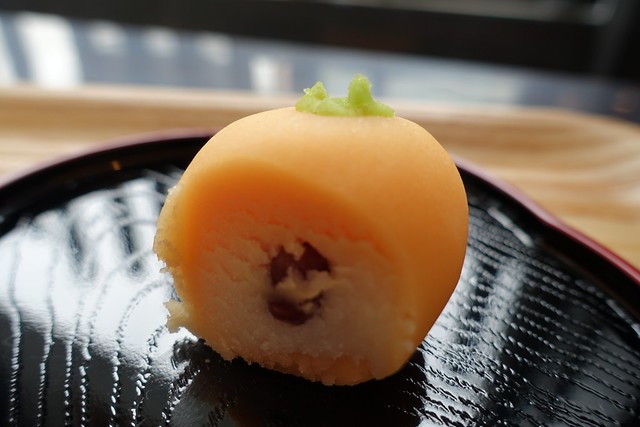
After an aimless stroll, I ended up at the Horanenya Denshokan, a museum dedicated to the festival. Entry was free so I decided to drop in and check the place out. It turned out to be a good way to end the day as I learned more about the festival and its origins.
The festival began as a ritual whereby the lord of the castle would bring the castle relic to the Adakaya Shrine to pray for the prosperity of the Matsue domain. One day, there was bad weather and the lord was in trouble. Fishermen from the five districts of Omizaki, Fukutomi, Oi, Yada and Makata came to the rescue. As a token of gratitude, the lord invited the fishermen to escort him when he transports the relic to the Adakaya shrine and back. This sparked the beginning of the Horanenya festival that eventually took the shape of the grand spectacle that we have seen this morning.
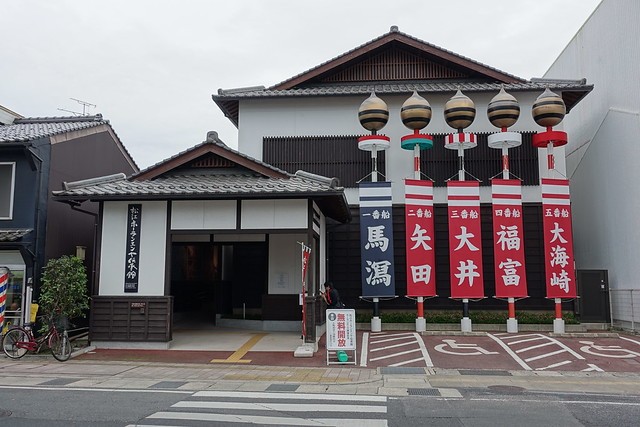
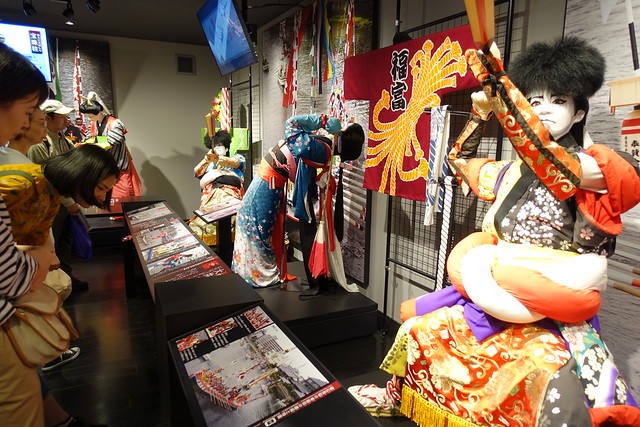
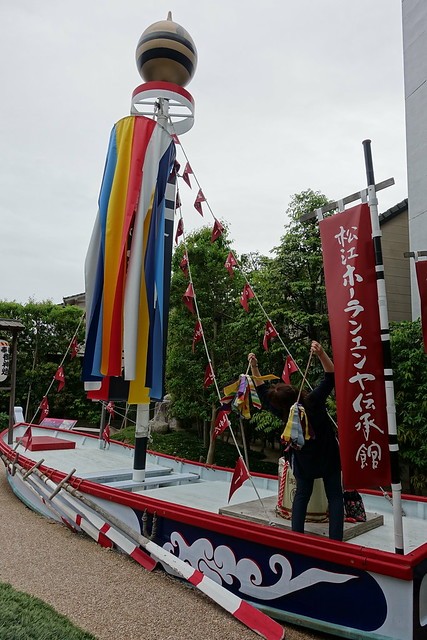
| previous post |
| next post |
